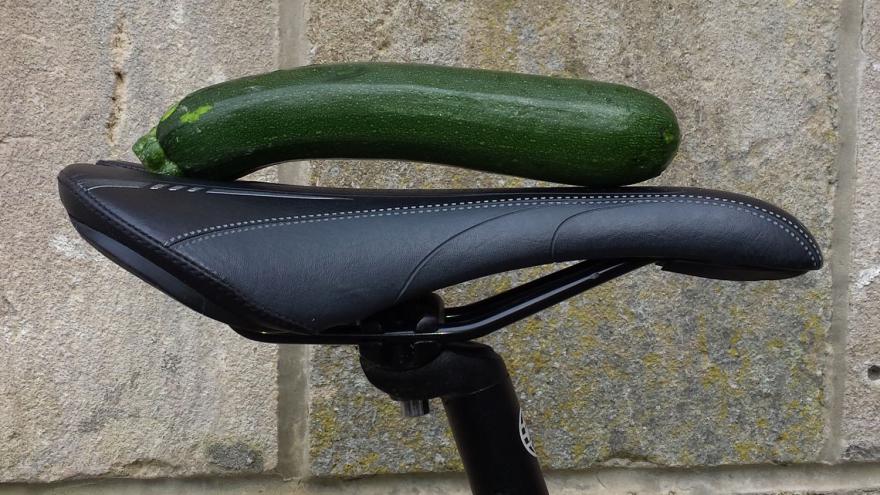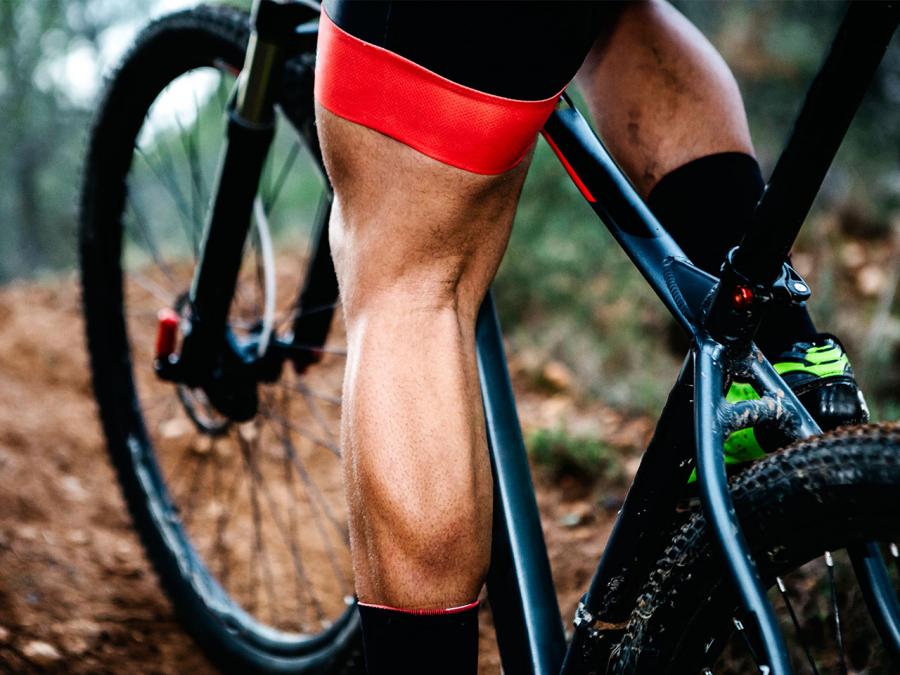Cycling And Erectile Dysfunction: A Hard Conversation That Needs To Be Had
Erectile dysfunction. It’s not a particularly sexy topic, nor is it something that any of us really wants to think about it. And yet it’s an issue that all male cyclists should be aware of, if not actively concerned about.
Between 50 and 91% of cyclists have experienced genital numbness of some kind while cycling. This numbness is caused when a rider’s saddle compresses their perineum, the region between their anus and genitalia; a region that’s packed with blood vessels and nerves.
While numbness itself can be disconcerting enough, the worry is that perineal compression in men1 might have a longer-term and more significant impact: erectile dysfunction (ED), or the ability to achieve and sustain a normal erection.
So how concerned should we really be about ED? What does the research say exactly? And what can we do to reduce the risks associated with cycling?
HOW IT ALL BEGAN
Concerns about a possible link between cycling and ED really started to build in August 1997 with an article published in Bicycling Magazine. Dr Roger Minkow, regarded by many as a pioneer of the modern saddle2, remembers the article well, so too the impact it had.
“There was a very frightening quote from Dr. Irwin Goldstein in Boston and he said that cycling was dangerous, it should be outlawed,” Dr Minkow told CyclingTips. “He estimated over 100,000 men were already suffering from erectile dysfunction. A lot of people did not believe the numbers that he was saying but the article in Bicycling Magazine opened the door to a problem that had been more or less kept secret.”
That article prompted Dr Minkow, an ergonomics expert with a medical degree from the UCSF School of Medicine, to start working on the problem. He devoted his time to learning more about human anatomy, to understand which parts of a rider’s undercarriage a saddle shouldn’t compress. He wasn’t working alone.
“There was a urologist in Germany, Frank Sommer, who was working on a way to measure penile blood flow while somebody rides a bike,” Dr Minkow recalls. “So I traveled to Germany and met with Frank and then I started designing the saddles according to penile blood flow.
“I would study penile blood flow every week and we would change the cut-outs [of the saddles] and adjust the fit of the bike so that the blood flow was the best it could be.”
The assumption Minkow and Sommer were working under was that reduced blood flow to the penis (caused by the squashing effect of the bike saddle) would result in scar tissue build-up. This, in turn, had the potential to prevent the blood flow necessary to achieve and maintain a healthy erection.
For some 19 years Dr Minkow worked with Specialized, using penile blood flow measurements to help guide the design of a range of saddles. He was the driving force behind the development of the company’s two most popular saddle lines: the Romin (named in his honour — ROger MINkow) and the Power.
The saddles that Dr Minkow designed didn’t just sell well — 500,000 units were reportedly sold in the first year — they ultimately changed the face of the saddle market. Twenty years after Dr Minkow first started work in this area, it’s a rare saddle brand indeed that doesn’t offer a model designed to reduce perineal compression.
WHAT WE KNOW NOW
Selling saddles to reduce perineal pressure is one thing. But what does the research say about how much of a problem that pressure is? Should we all be riding cut-out saddles?
There has been much research in the past few decades looking at the potential links between cycling and ED. Some studies suggest that cycling does indeed increase the risk of ED, while others suggest there’s no such link.
One of the most cited papers in this space was published in 1997 after K.V. Andersen and G. Bovim analysed riders in the Styrkeprøven (Great Tour of Strength), an annual, 15-hour, 540km amateur bike race in Norway. They found that roughly 20% of participants in that race suffered from penile numbness afterwards, with a third of those having numbness for more than a week.
A 2010 literature review by Frank Sommer and Irwin Goldstein was also troubling, suggesting that “There is a significant relationship between cycling-induced perineal compression leading to vascular [related to the veins], endothelial [cells of the blood vessel walls], and neurogenic [of the nervous system] dysfunction in men and the development of ED”.
But a 2014 study by UK researchers offered a different perspective. In the largest study of its kind, 5,300 male cyclists completed a questionnaire detailing their riding habits and any ED symptoms or doctor-diagnosed infertility they’d experienced. The researchers’ conclusion? That there was no evidence for “a simple causal relationship between cycling volume, ED, and infertility”.
That study prompted a flurry of media activity, with various publications claiming the myth had been busted; that cycling didn’t cause ED. End of story, right? Perhaps not.
ONGOING RESEARCH
Dr Minkow might have left Specialized in 2016 but he certainly hasn’t stepped away from the world of saddle design. Instead, he’s working with researchers at Stanford University to conduct important new research on the links between cycling and sexual function.
“We set out to do the most extensive study ever done on cycling-related links between ED and numbness and tingling, and also women’s problems as well,” Dr Minkow said. “We currently have 1,150 men in this study and 150 women which makes it among the largest studies that have been done so far.”
The study is still in progress and will be for roughly another year. It’s open to men and women around the world, aged 18 years or older, and comprises an online questionnaire roughly 15 minutes in length. Users are asked about saddles they’ve used in recent years, their riding history, as well as any sexual issues they might have encountered.
The goal is to determine whether there’s a link between the saddles people are using and the prevalence of ED.
“Before, the best we could do was say ‘If you have bad penile blood flow you probably will have problems but we don’t know that you’ll have problems — we just guess that you’ll have problems’,” Dr Minkow explained. “Now we’re going to say ‘OK we’ve got thousands of people in this study and when we saw the people that had erectile dysfunction … when we look back at what they were riding and how they were riding, we could figure out that certain designs and certain riding styles were absolutely dangerous.’”
It’s too early in the study for Dr Minkow to say which saddles or saddle designs pose the greatest risk, but he and Dr Eisenberg do seem to have made several other, important findings.
“What Eisenberg has just figured out [by] analysing the early data is that some of the symptoms do not necessarily correlate with erectile dysfunction,” Dr Minkow said. “Like pain is not necessarily correlative at this point in the study. Numbness is correlative if it’s in the penis. But if it’s in the anus or if it’s in the other areas in the perineum it does not correlate yet with ED.
“But there is a definite link between numbness in the penis and erectile dysfunction.”
They also seem to have found a link between a greater volume of riding and ED.
“We also know that more than a certain number of hours a week creates problems,” Dr Minkow said. “And cyclists don’t want to hear that. But what we’re finding in this study is that if you’re riding a bicycle more than 10 hours a week, you’re at a much greater risk.”
This finding lines up with previous studies of ED in those who spend much of their working life on a bike, including police officers and bike taxi riders.
FROM STUDY TO PRACTICE
While the results of the Stanford study are some time away from being published, Dr Minkow is already looking ahead to the next generation of saddle designs. He’s been working with a small component manufacturer in Switzerland called ERE Research, developing a new range of saddles.
“The basis of the design is going to be ergonomically to make things as safe as possible,” Dr Minkow said. “And this is, in a way, where we started a long time ago. But I think the bicycle industry has sort of … they haven’t followed through as much as they could have with medical research.
“So the ERE saddles — [they] will not come out until probably June — will be scientifically based with the most modern information that we have. It will not be based on blood flow, it won’t be based on pressure mapping6; it’s going to be based on diseases and who’s healthy and who is not healthy.
“So I think there’s something to look forward to for the cyclists because right now I think people are rather bored and asleep because the industry seems rather stagnant.”
WHAT YOU CAN DO
So how does all of this affect the everyday male rider? Should we be worried about ED? And if so, what can we do about it?
Dr Minkow believes that it comes down to whether an individual has any pain or numbness during or after riding.
“If they have no symptoms I do not believe they’re going to be at much risk,” he said. “But I believe that there are certain symptoms that are going to be triggers for real serious problems like ED and that’s where the penile numbness comes in.
“If you’re a rider and you’re getting numbness in your penis, switch saddles or get a bike fit and make those symptoms go away.”
In his time in the saddle game, Dr Minkow has come across many men who have chosen to ignore numbness or pain — something he views as a big mistake.
“Cyclists dismiss these kind of symptoms and go ‘Ah it’s just part of riding. It’s no big deal.’ And they basically tend to deny that there’s a problem,” he said. “And of course many of them do not go on to have erectile dysfunction. But what this study is starting to show is that cyclists should not deny all the symptoms. There are some that have to be taken seriously.
“If you have certain areas of numbness, pay attention. Pay attention and be careful and do something about it. Change something, get [a bike] fit, change your saddle, change your riding style, but don’t let certain symptoms go.”
If you’re riding a traditional saddle, switching to a saddle with a cut-out and/or stub nose is perhaps the most significant change you can make. This will ensure that your sitbones are taking the bulk of the compression forces, rather than the soft tissue in between.
But changing your saddle affects more than you might realise, as Nick Gosseen from Specialized’s On-Rider Equipment team explains.
“Changing your saddle affects your entire fit,” he told CyclingTips. “So your saddle may feel really good but your back might hurt or your knees might hurt because you’re sitting crooked. It’s not just genital pain or genital numbness that indicates a bad saddle. It’s the platform for which you sit on the bike, holistically.
“We say that if you change out your saddle you’ve got to really go back and get a new fit because you change the foundation. I think that’s something that people generally don’t pick up.”
IN CLOSING
It can be easy to laugh off the issue of erectile dysfunction. And if you’re a racer or a rider that likes the discomfort of riding hard, you might even find it easy to ignore genital numbness or pain. But these are issues we should all be taking seriously.
The latest research from Stanford seems to suggest that if you’re getting penile numbness, you should act immediately to change your on-bike setup. And as unappealing as the prospect might be, there might even be merit to reducing the amount of time you spend on the bike.
It will certainly be worth keeping an eye on the research coming out of Stanford; research we can all help contribute to.
“We have about 1,500 people in the study. If we had 10,000 people in this study I would be able to tell you exactly what part of the saddle design correlated to disease,” Dr Minkow said.” So that’s why we need enormous support from all around the world; all different kinds of cyclists — men, women, old people, young people, everybody.”
Source: CyclingTips
“Cycling and erectile dysfunction: a hard conversation that needs to be had” by:Matt de Neef


